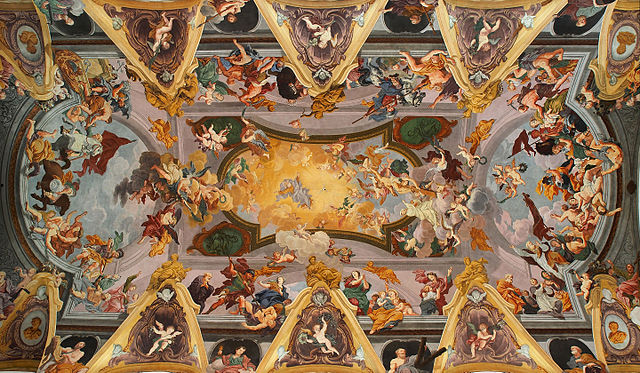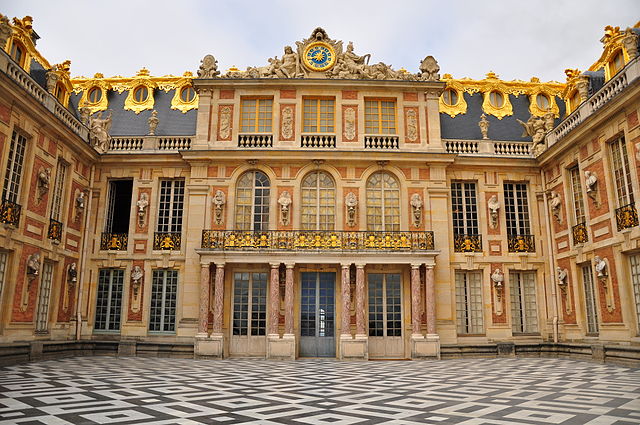Illusionistic ceiling painting
Illusionistic ceiling painting, which includes the techniques of perspective di sotto in sù and quadratura, is the tradition in Renaissance, Baroque and Rococo art in which trompe-l'œil, perspective tools such as foreshortening, and other spatial effects are used to create the illusion of three-dimensional space on an otherwise two-dimensional or mostly flat ceiling surface above the viewer. It is frequently used to create the illusion of an open sky, such as with the oculus in Andrea Mantegna's Camera degli Sposi, or the illusion of an architectural space such as the cupola, one of Andrea Pozzo's frescoes in Sant'Ignazio, Rome. Illusionistic ceiling painting belongs to the general class of illusionism in art, designed to create accurate representations of reality.
The illusionistic perspective of Andrea Pozzo's trompe-l'œil dome at Sant'Ignazio (1685) creates an illusion of an actual architectural space on what is, in actuality, a slightly concave painted surface.
Andrea Mantegna, di sotto in sù ceiling fresco in the Camera degli Sposi of the Ducal palace, Mantua
Ceiling of the Jesuit Church, Vienna by Andrea Pozzo (1703)
The ceiling in Ljubljana Cathedral, painted by Giulio Quaglio the Younger in 1705–06
The Baroque or Baroquism is a Western style of architecture, music, dance, painting, sculpture, poetry, and other arts that flourished from the early 17th century until the 1750s. It followed Renaissance art and Mannerism and preceded the Rococo and Neoclassical styles. It was encouraged by the Catholic Church as a means to counter the simplicity and austerity of Protestant architecture, art, and music, though Lutheran Baroque art developed in parts of Europe as well.
Image: WLA metmuseum Venus and Adonis by Peter Paul Rubens
Image: Ecstasy of Saint Teresa September 2015 2a
Image: Cour de Marbre du Château de Versailles October 5, 2011
Pendant in the form of a siren, made of a baroque pearl (the torso) with enameled gold mounts set with rubies, probably circa 1860, in the Metropolitan Museum of Art (New York City, New York).








